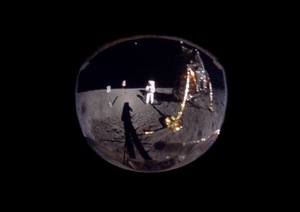Behold: M33, also known as NGC 598, also known as the Triangulum Galaxy – a mere three million light years away and well supplied with clouds of glowing hydrogen gas. But how to tell one rosy-cheeked rascal from the next? To wit:
Sprawling along loose spiral arms that wind toward the core, M33’s giant HII regions are some of the largest known stellar nurseries, sites of the formation of short-lived but very massive stars. Intense ultraviolet radiation from the luminous massive stars ionises the surrounding hydrogen gas and ultimately produces the characteristic red glow. To highlight the HII regions in this telescopic image, broadband data used to produce a colour view of the galaxy were combined with narrowband data recorded through a hydrogen-alpha filter, transmitting the light of the strongest hydrogen emission line. Close-ups of cataloged HII regions appear in the sidebar insets. Use the individual reference number to find their location within the Triangulum Galaxy. For example, giant HII region NGC604 is identified in an inset on the right and appears at position number 15. That’s about 4 o’clock from galaxy centre in this portrait of M33.
Full sized image here.
(Image: Luca Fornaciari)




































